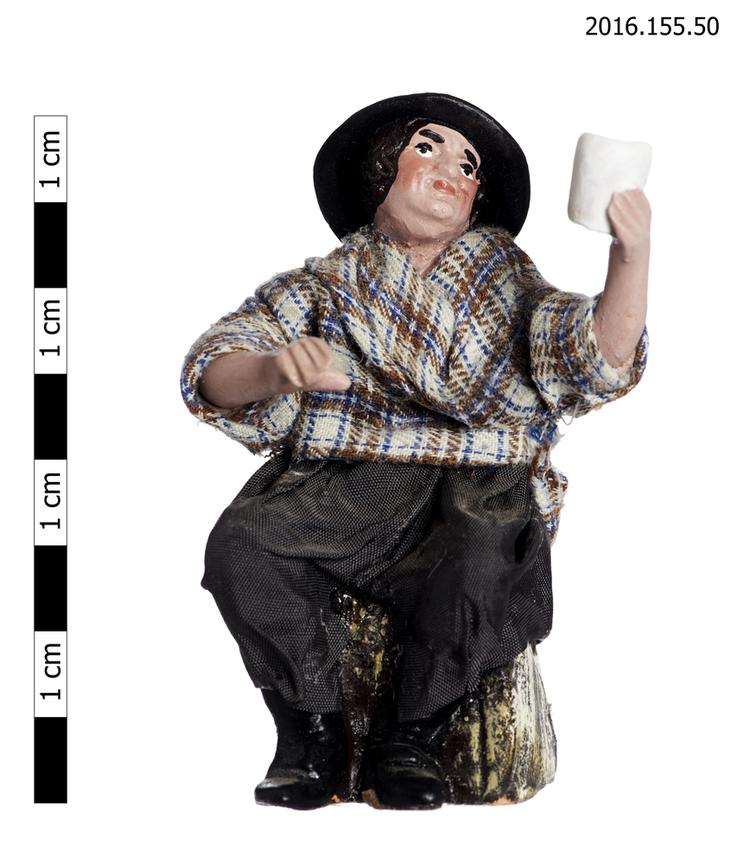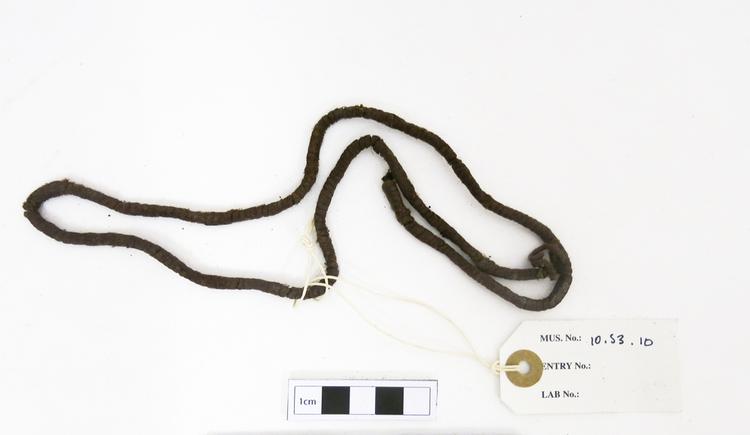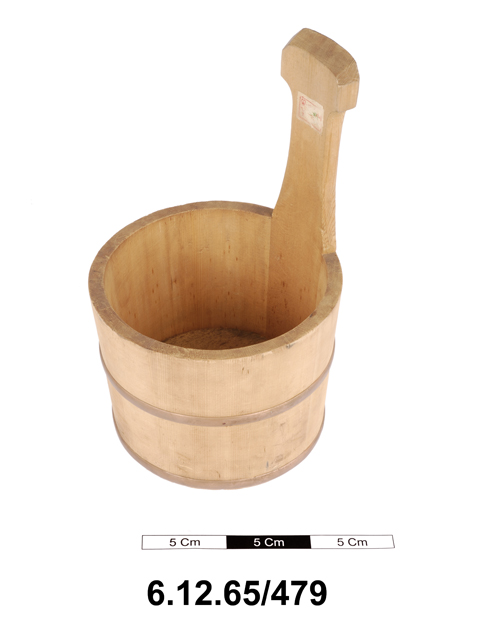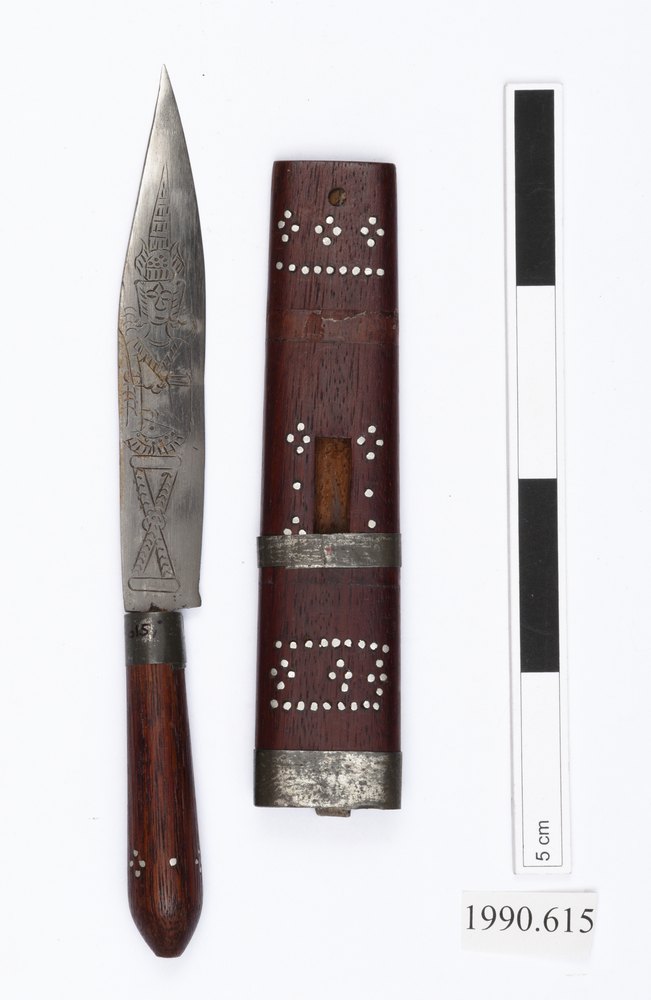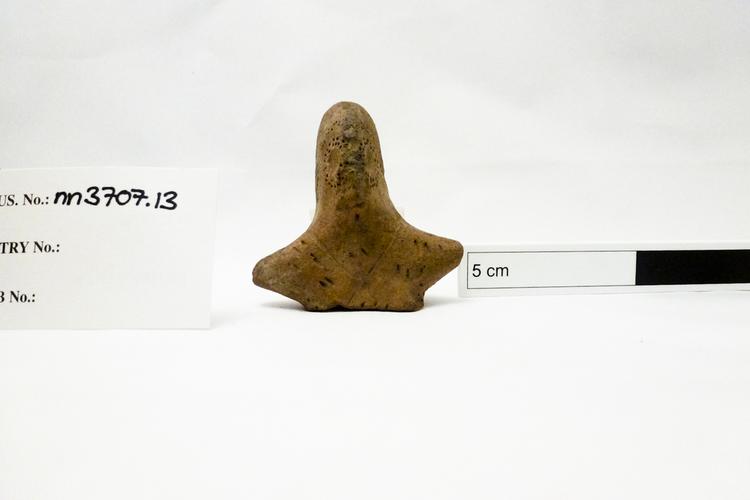
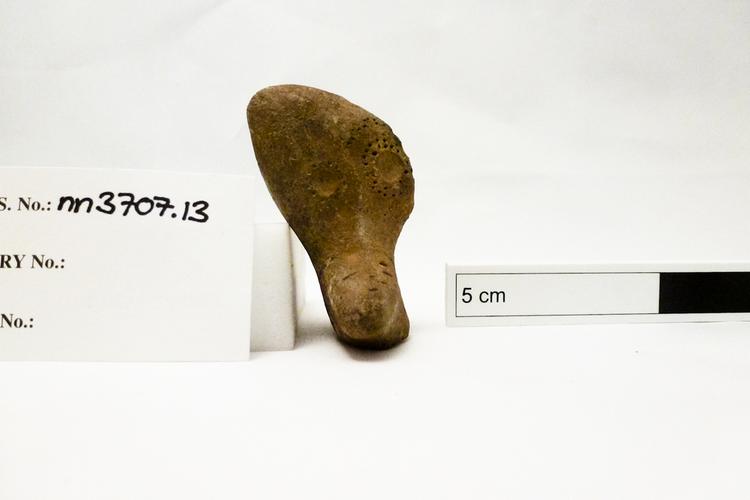
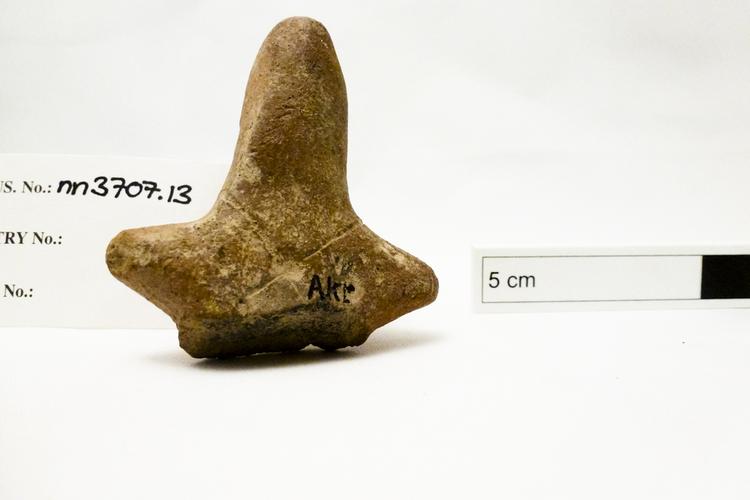
Head and upper torso of a human figurine with short outstretched arms, large pinched nose on a tall almost pointed head with a semi-triangular profile. The pinched nose is now much eroded and the eyes consist of shallow depressions surrounded by circles of punched dots, ears are also shallow round depressions surrounded by punched dots. The torso, front and back are incised with a simple cross belt in the way of almost all figurines of the Sar Dheri types. The front torso is further decorated with a few pairs of short incised lines, almost dots. This is probably a votive figurine, though it is much less elaborately made and decorated than the best known varieties.
Head and upper torso of a human figurine with short outstretched arms, large pinched nose on a tall almost pointed head with a semi-triangular profile. The pinched nose is now much eroded and the eyes consist of shallow depressions surrounded by circles of punched dots, ears are also shallow round depressions surrounded by punched dots. The torso, front and back are incised with a simple cross belt in the way of almost all figurines of the Sar Dheri types. The front torso is further decorated with a few pairs of short incised lines, almost dots. This is a votive figurine, most likely, in the way of most of the broad types of human figurines of this period, though it is much less elaborately made and decorated than the best known varieties. Marked on the back with 'Akt' (possibly Akhtar Dheri, an Early Historic Period site on the Kabul River, south of Charsadda (Khyber-Pakhtunkhwa, Pakistan), a site name abbreviation very common in the Gordon collection in the British Museum, and probably the other places where his collection was distributed. It is my (Robert Knox) recollection that when I wrote from the British Museum to Col Gordon's daughter in the 1980s to ask about site names written on her father's collection by her mother, still alive in those days, that 'Akt' was associated with Akhtar Dheri. Early Historic Period, probably about 1st to 2nd century BCE. Archaeological context: presumably unstratified and from a surface collection. Given by Col. D H Gordon (1952/3).



